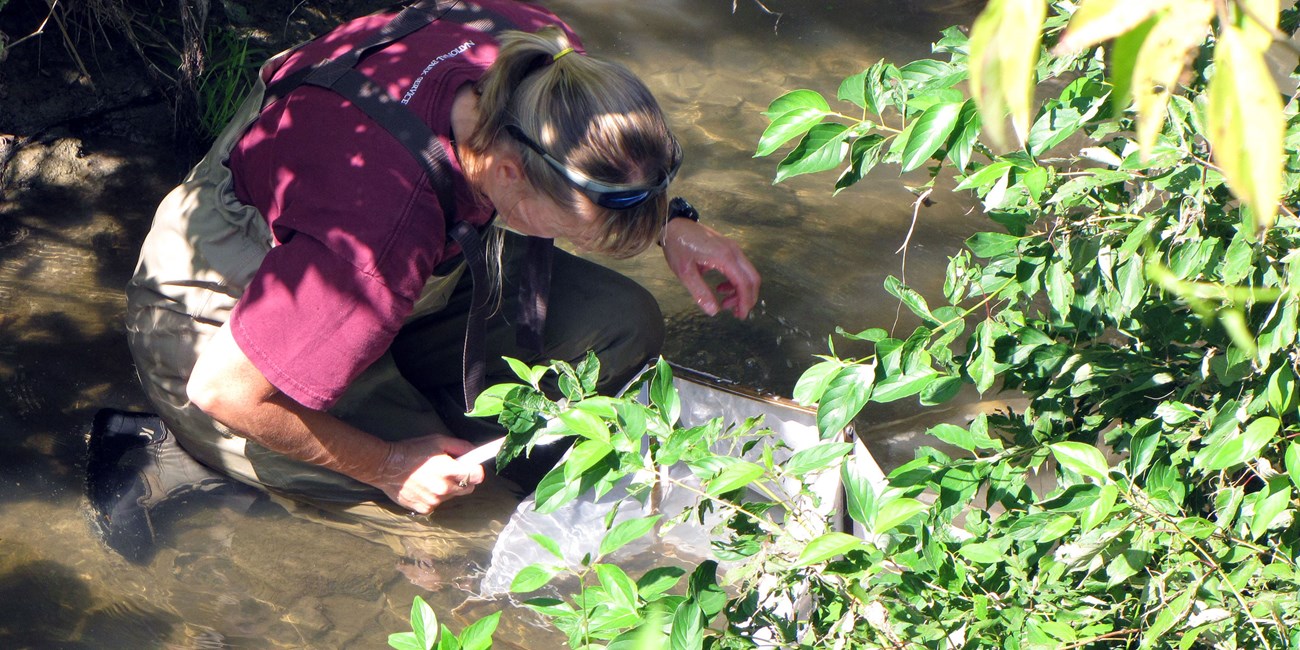
NPS Photo National Park Service staff and volunteers use current science, research, and management practices. Historical and archeological studies help park staff preserve, maintain, and educate others about the park's people, places, and stories. Natural sciences research builds a strong scientific foundation for the management and protection of natural resources. National Park scientists at the Heartland Inventory and Monitoring (I&M) Network, fifteen national parks in the Midwest sharing resources and professional expertise, periodically inventory and monitor the park's natural resources. Trends in populations of birds, native plant communities, and exotic invasive plants may indicate changes in the overall health of the reconstructed tallgrass prairie. Park scientists assess the quality of stream habitat by inventorying Hoover Creek's physical characteristics as well as fish and aquatic invertebrate communities. Research data, studies, and reports may be found using the National Park Service's Integrated Resource Management Applications (IRMA). Natural Sciences ResearchSource: NPS DataStore Collection 4260 (results presented are a subset). To search for additional information, visit the NPS DataStore. Source: NPS DataStore Saved Search 3507 (results presented are a subset). To search for additional information, visit the NPS DataStore. |
Last updated: February 2, 2021
